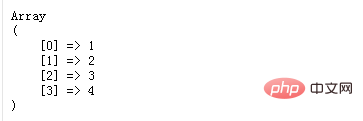Home >Backend Development >PHP Problem >Detailed graphic explanation of several transfer methods of PHP function parameters
When calling a function, you need to pass parameters to the function. The parameters passed into the function are called actual parameters, and the parameters defined by the function are called formal parameters. There are four ways to pass parameters to a function, namely passing by value, passing by reference, default parameters and variable length parameters.
Passing parameters by value
The default parameter passing method is what we use by default when passing parameters. The operation of formal parameters will not affect to the actual parameter value. Therefore, if you do not want the function to modify the value of the actual parameter, you can pass it by value.
<?php
function test($a){
echo ++$a;
}
$i=10;
test($i);
echo '<br/>'.$i;
?>Running results:
11 10
You can see from the running results that the values have indeed changed within the function, but outside the function, the values have not changed. So we can say that passing a function by value is just passing a copy of the variable. So if you want the function to be able to operate on external parameters of the function, you need to use reference passing.
Pass parameters by reference
Pass parameters by reference, and operations on formal parameters will affect the actual parameters. In this way, we operate on the parameter itself inside the function.
<?php
function test(&$a){
echo ++$a;
}
$i=10;
test($i);
echo '<br/>'.$i;
?>The running result is:
11 11
Default parameters of the function
You can set the default value for the formal parameter, and you can set it by directly assigning the value
Note:Must be assigned from right to left. The value on the right must be present before the value on the left can be assigned. If only the value on the left is assigned and not the value on the right, the assignment on the left will not be done. The running result of the number
<?php
function test($a=10,$b=20){
echo $a+$b;
}
test(20,25);
?>is: 45. If you only assign a value to $a and assign a value to $b when calling, the following results will be displayed:

Variable length parameter list
In PHP 5.6 and later versions, the formal parameters of a function can use... to indicate that the function can accept a variable number of parameters, variable The parameters will be passed to the function as an array.
<?php
function test(...$arr){
print_r($arr);
}
echo '<pre class="brush:php;toolbar:false">';
test(1, 2, 3, 4);
?>We can see that his running results are:

Recommended learning: "PHP Video Tutorial"
The above is the detailed content of Detailed graphic explanation of several transfer methods of PHP function parameters. For more information, please follow other related articles on the PHP Chinese website!